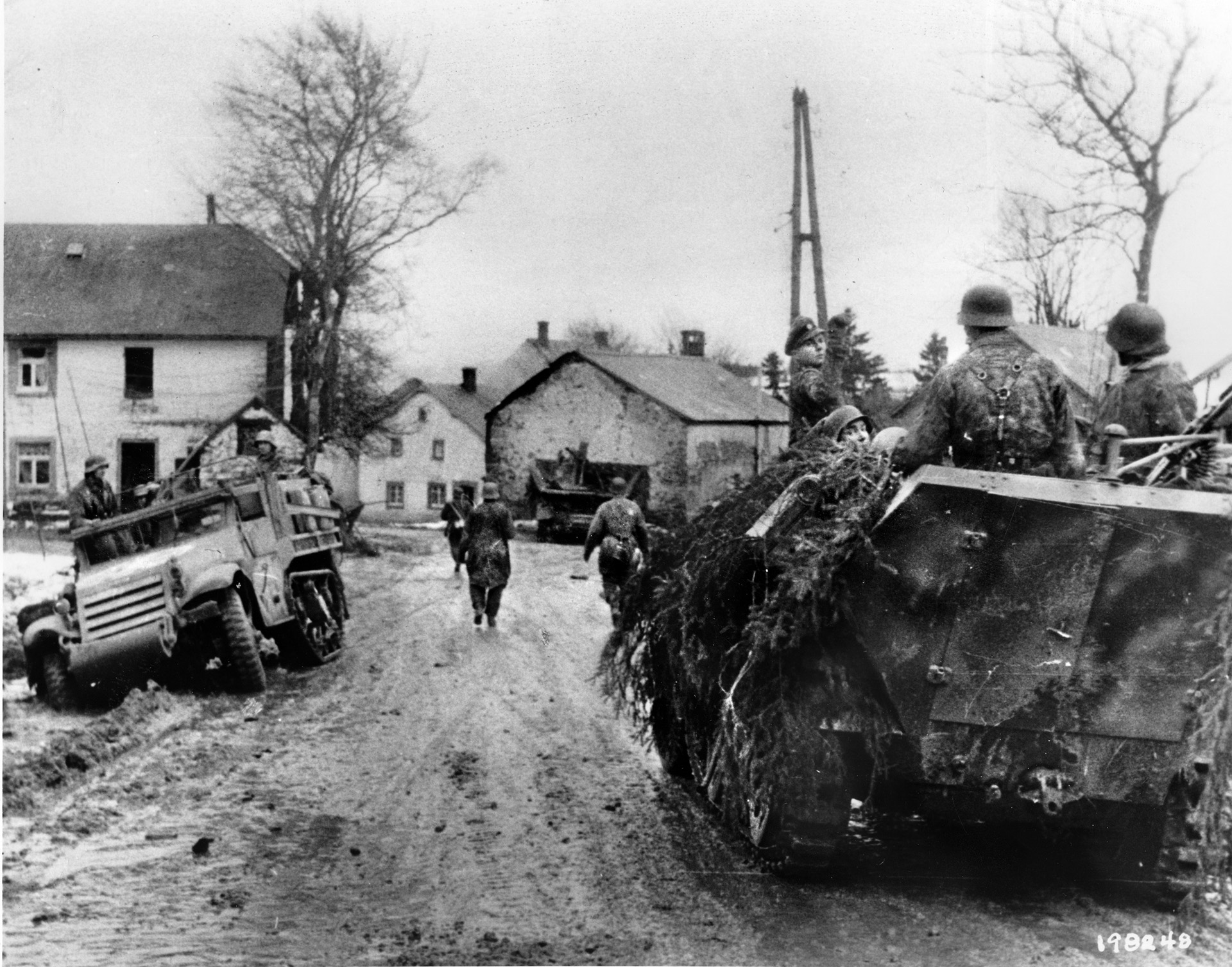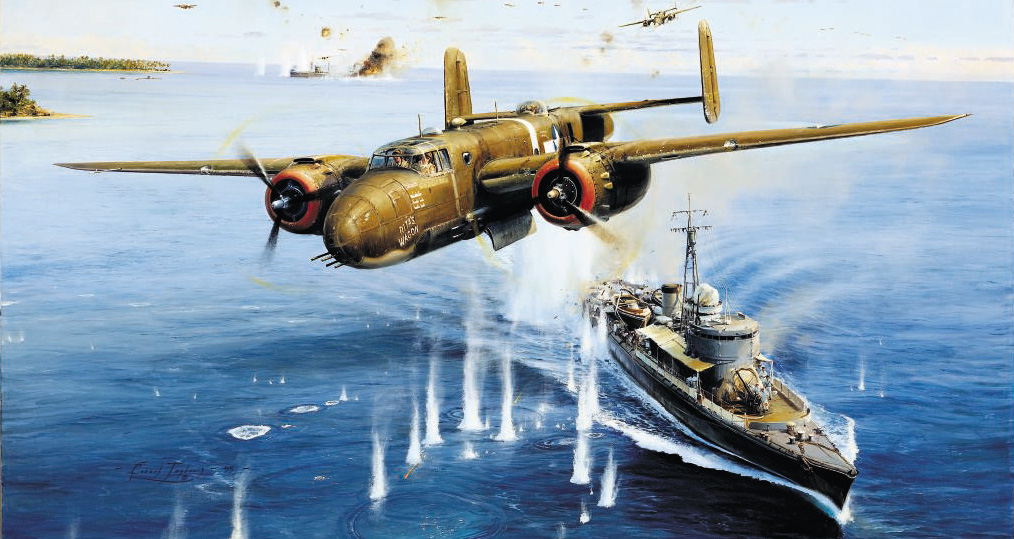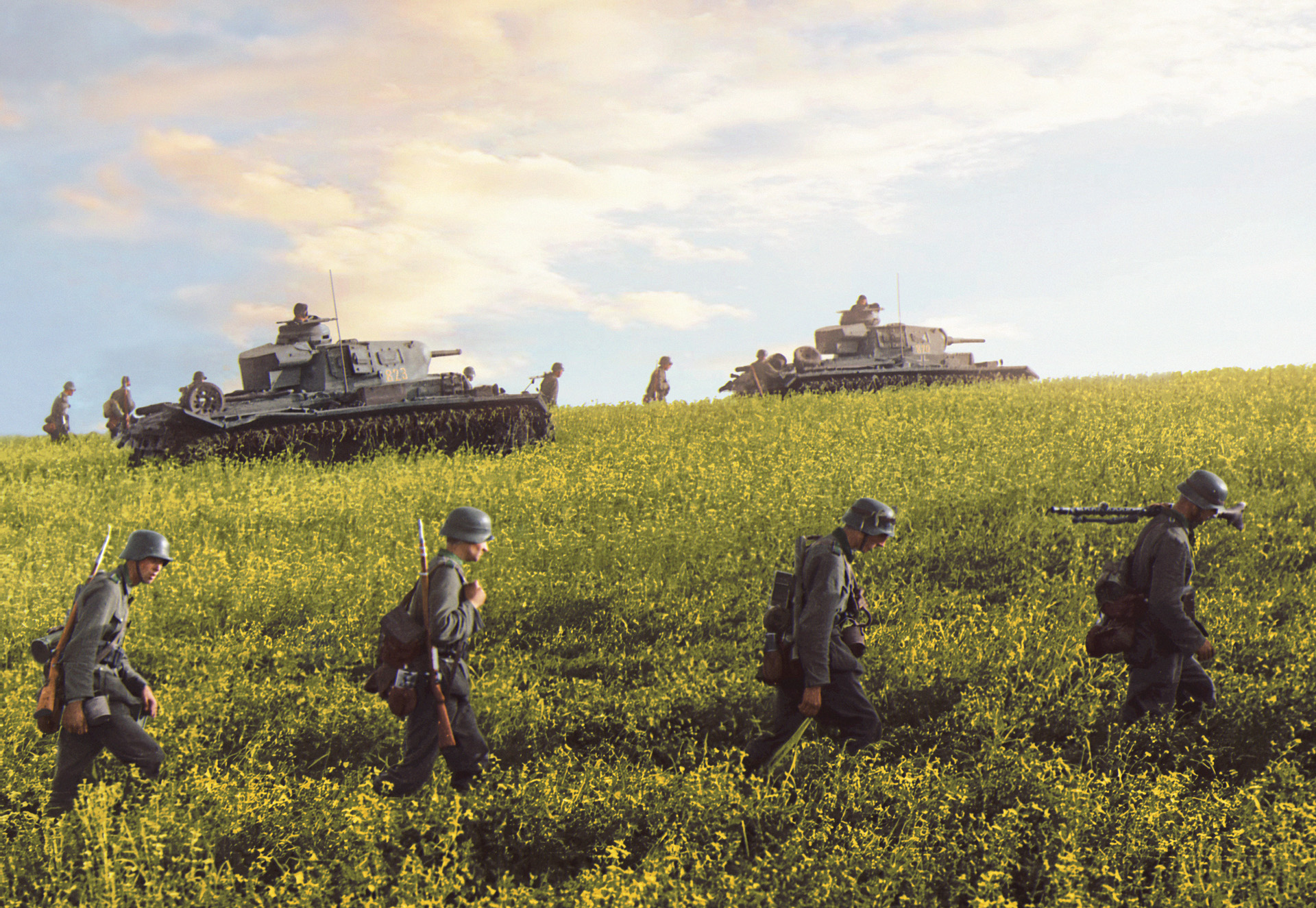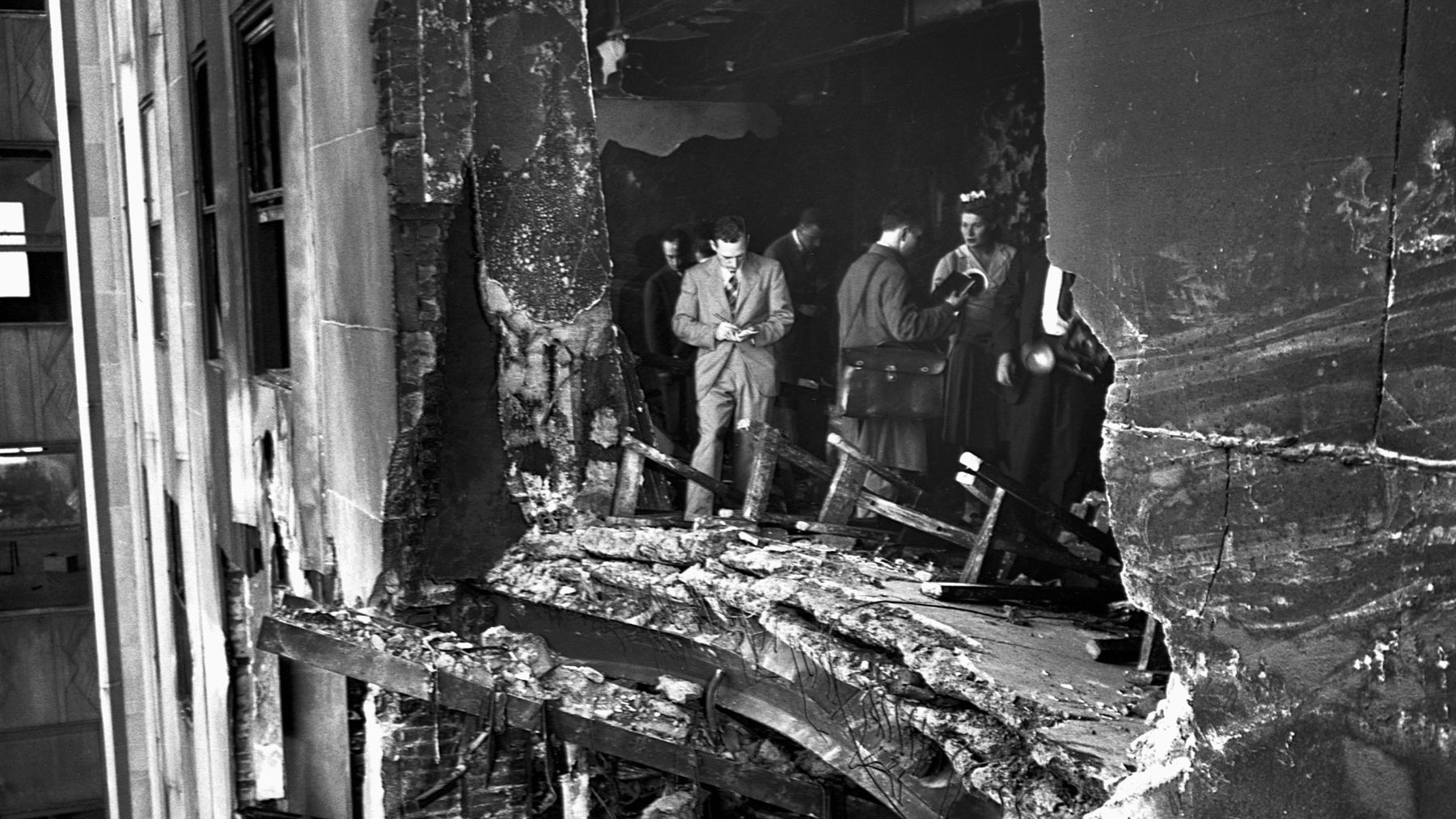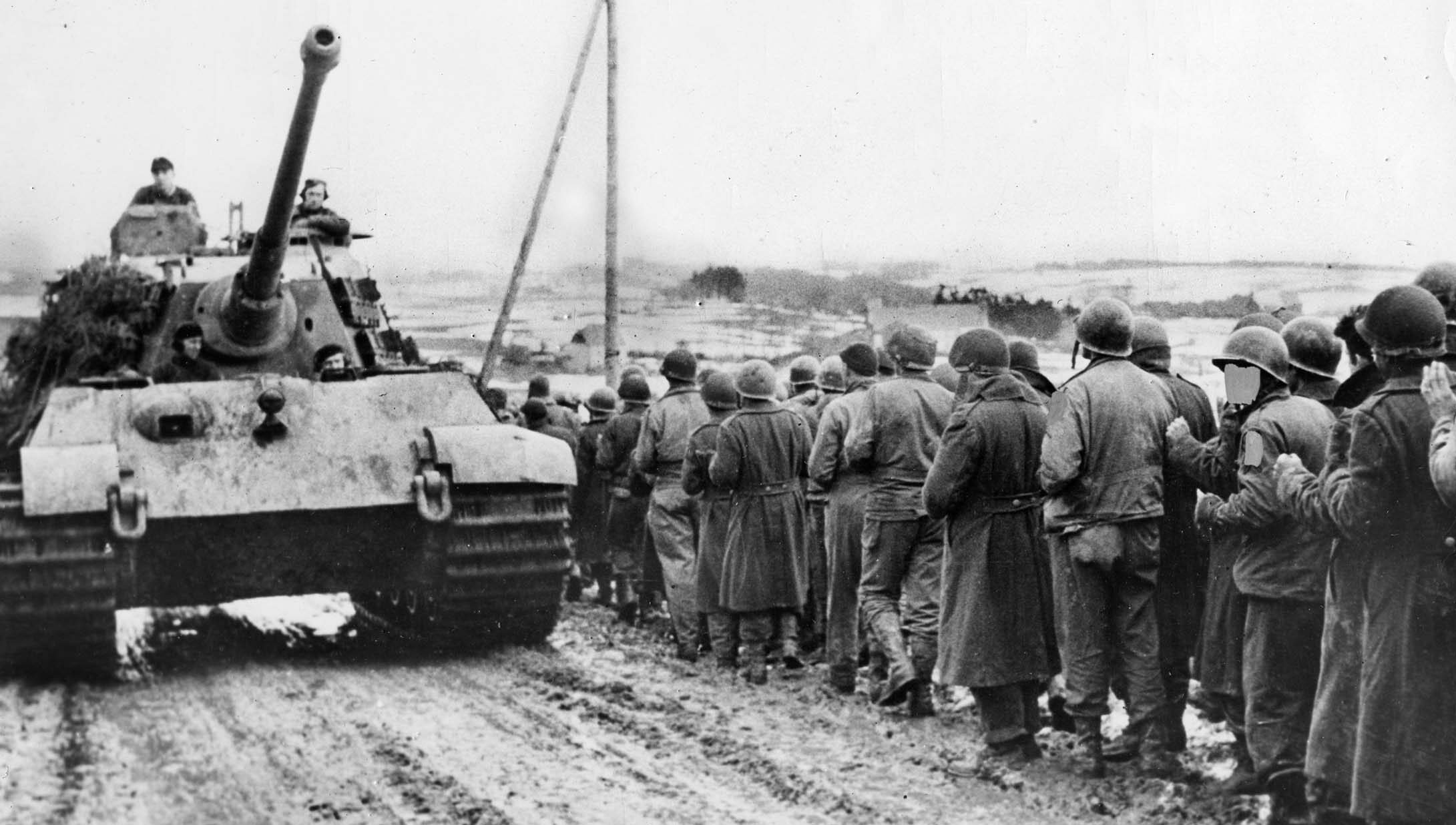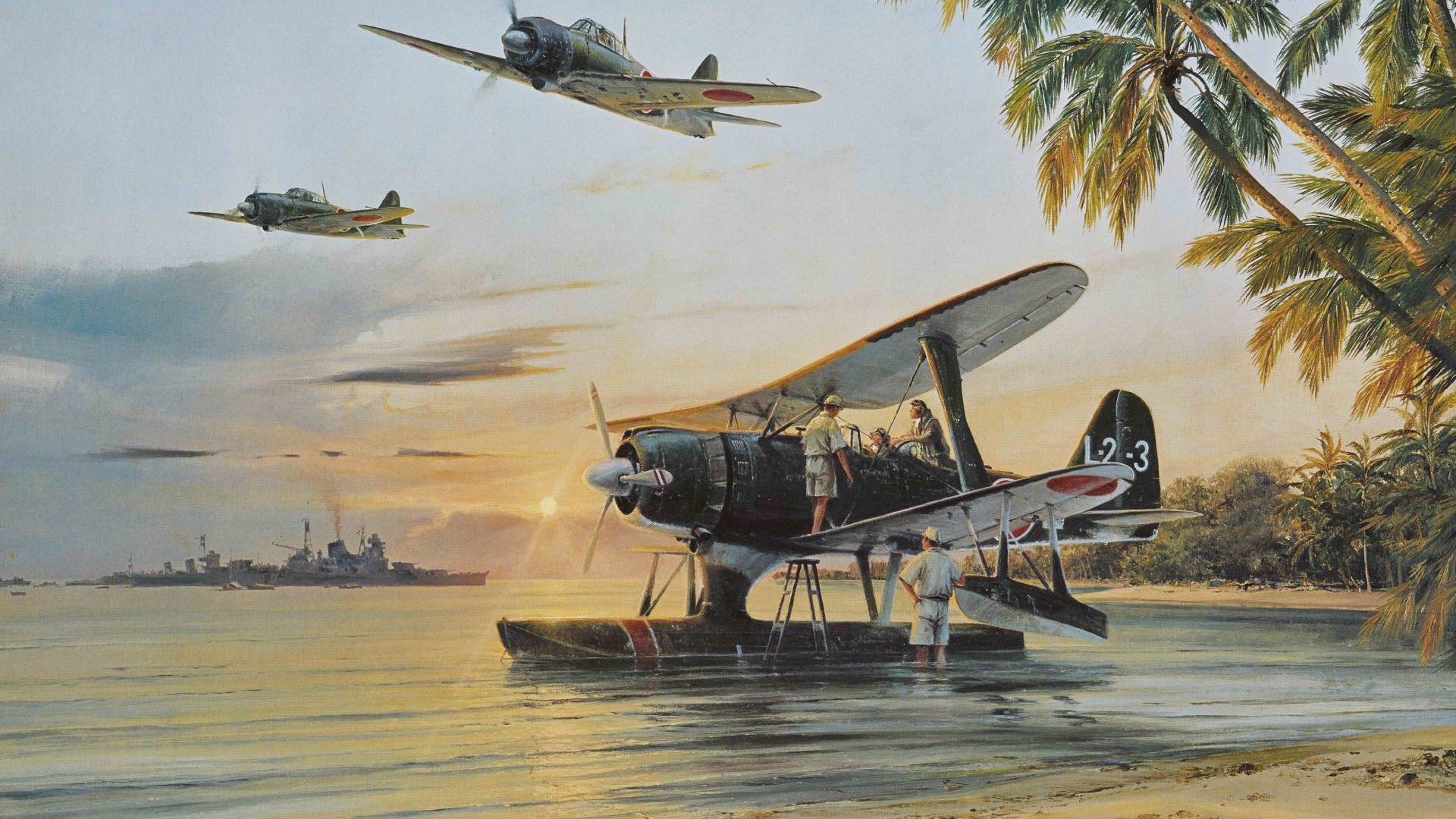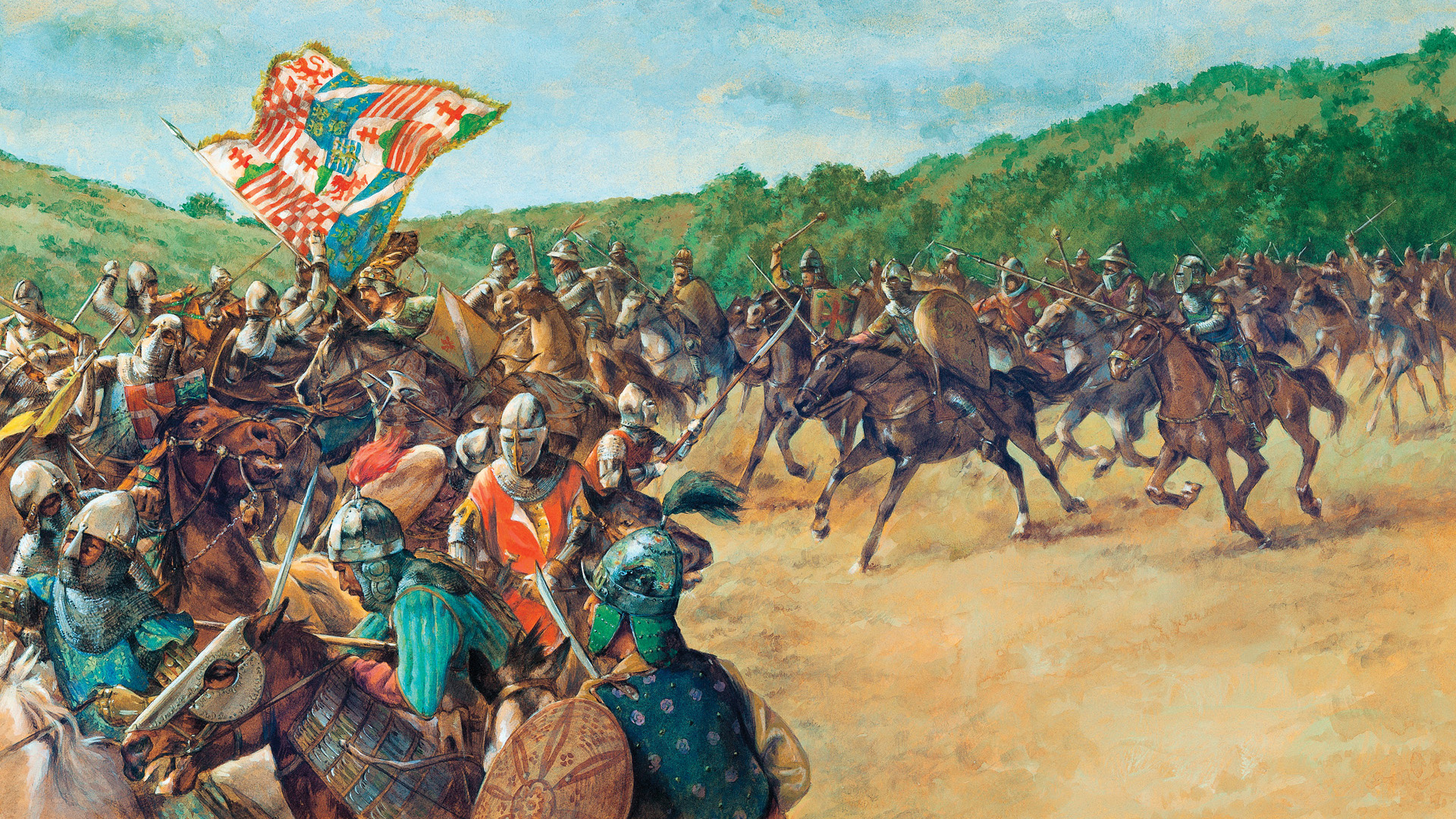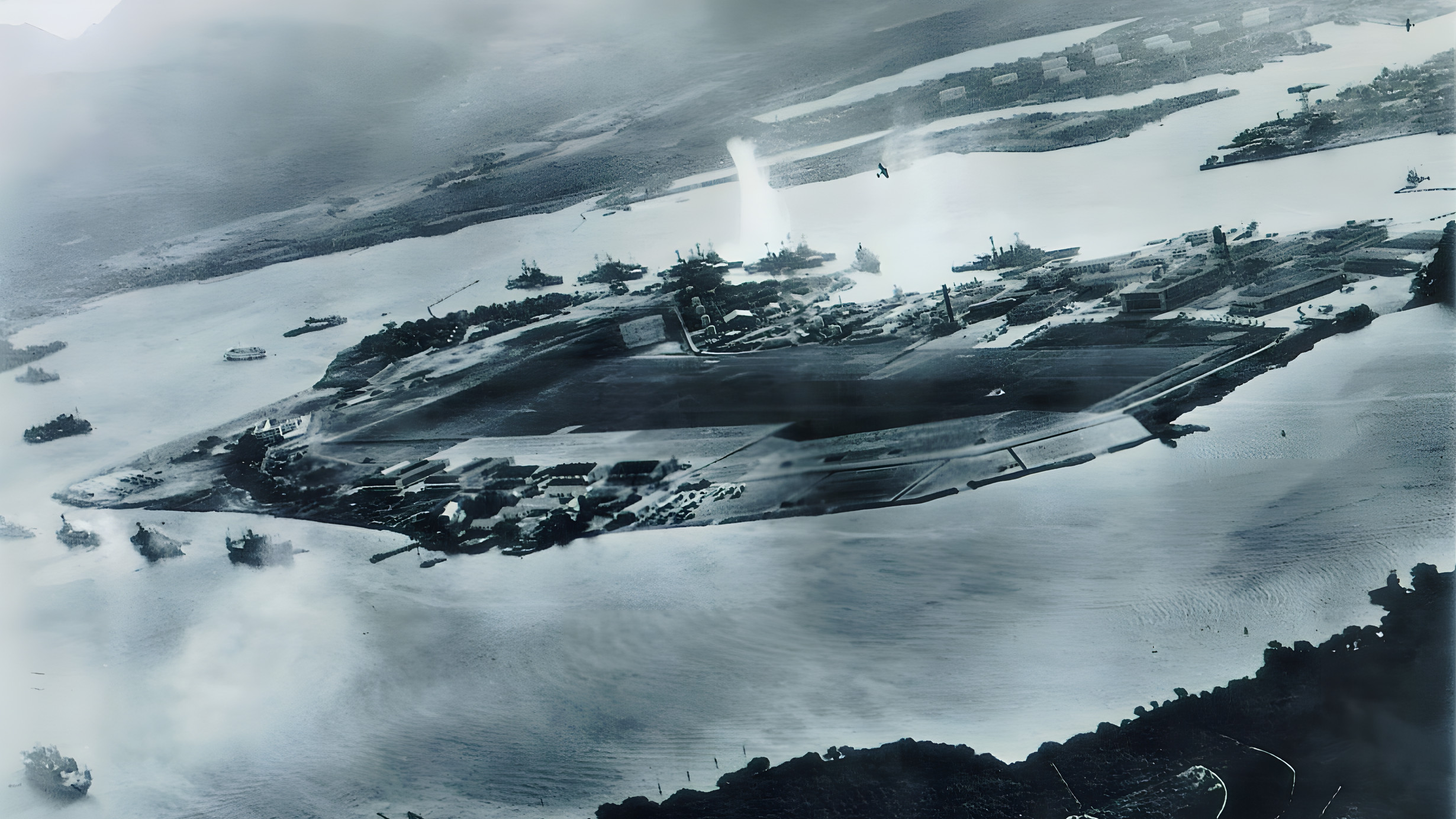By Michael Hull
After the tumultuous liberation of Paris and the German Army’s eastward flight from France, Allied hopes rose high in the late summer and autumn of 1944. Nevertheless, The Wehacht was fighting stubbornly, inflicting heavy losses before the pursuing British, American, and Canadian armies. But the Germans were definitely on the run, and the possibility of an Allied victory by the year’s end bred delusions and a false euphoria in the Allied headquarters. The Germans were finally cracking; it was believed, and were no longer capable of a major offensive effort.
However, a lull set in as the Allied push toward the gates of the Third Reich lost steam. Field Marshal Bernard L. Montgomery’s bold Operation Market-Garden failed to capture the Rhine crossings at Arnhem, and Lt. Gen. George S. Patton Jr.’s drive into Lorraine stalled. With a concerted offensive strategy lacking, the Allied armies outran their supply lines and lost momentum.
By September 1944, after the Allies’ sweep across France, Belgium, and Luxembourg, the supposedly defeated German Army had stopped the Allies cold. American units tried again and again to batter their way through the concrete-and-steel Siegfried Line (West Wall), a seven-week struggle to reduce German defenses around Aachen that proved costly, and several U.S. divisions were being chewed up needlessly in the bitter Hurtgen Forest campaign.
Nevertheless, on October 8, 1944, General Omar N. Bradley, commander of the U.S. 12th Army Group, told Lt. Gen. Walter Bedell Smith, chief of staff to General Dwight D. Eisenhower, the Allied supreme commander, “If the other fellow would only hit us now! I’d welcome a counterattack. We could kill many more Germans with a good deal less effort if they would only climb out of their holes and come after us for a change.”
Nazi dictator Adolf Hitler was actually using the lull on the Western Front to reequip and reinforce his garrisons along the West Wall, and Bradley would not have to wait long for a counterattack.
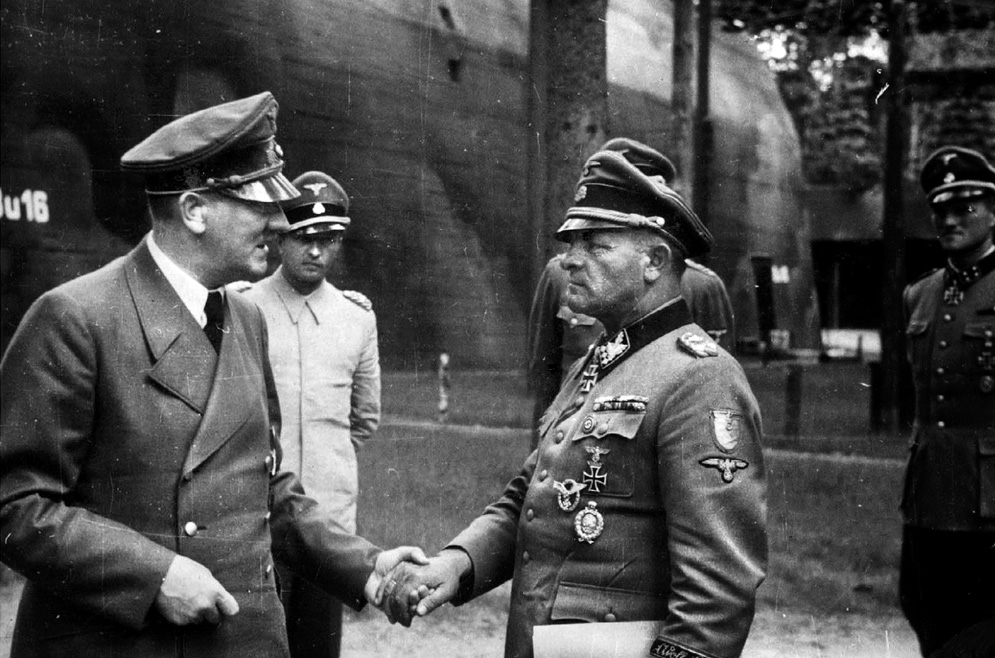
The Allied setbacks in September 1944 gave Hitler time to consider a major effort to regain the initiative. He plotted his “revenge” while recuperating from injuries suffered in the July 20 assassination attempt at his Rastenburg headquarters in East Prussia. The Fuehrer ruled out a strike against the Soviets because he perceived no operational objective that would undermine Marshal Josef Stalin’s political will.
Hitler viewed the Anglo-American threat with less respect. Perhaps a major attack could split their armies or even drive the British—virtually exhausted after five years—from the war. Able General Heinz Guderian, new chief of the General Staff, urged Hitler to give priority to the Eastern Front, but the Fuehrer, minimizing Soviet strength as he had done in the +9past, discounted the advice and set his sights westward. He was soon tempted to repeat his spectacular “blitzkrieg” success of May 1940 with a push through the Ardennes Forest.
Concentrating all available forces for such a major strike, he believed he could achieve two objectives: divide and defeat the British-Canadian and U.S. Armies in France and recapture the strategic port of Antwerp, Belgium, 125 miles distant. A long-deluded strategist who had lost touch with reality, the Nazi dictator believed that he could still win the war.
The Allied high commanders had been on the offensive for so long that they could not imagine the enemy taking the offensive and were sure that the German Army—while still fighting with characteristic tenacity—was on its last legs. Eisenhower and his generals counted on caution and orthodoxy on the enemy’s side in view of the fact that Hitler had reappointed 70-year-old Field Marshal Gerd von Rundstedt as his western commander-in-chief. The Allied commanders were to be proved wrong in all these respects.
When the Fuehrer laid out his demands for the operation on September 16, a number of generals immediately raised doubts. Guderian voiced grave misgivings and said that the Soviet Army was about to attack in overwhelming strength, while Jodl warned of Allied aerial supremacy and the likelihood of paratroop landings. Rundstedt was “staggered.” He said later, “It was obvious to me that the available forces were far too small for such an extremely ambitious plan.” Field Marshal Walther Model, Hitler’s personal choice to command the offensive, was dismayed. “This damned thing hasn’t got a leg to stand on,” he fumed.
After the July assassination attempt, Hitler was a sick man. His face was pale and puffy, his skin was yellowing, he was weary, and he wanted no food. He was stooped, his left arm twitched violently, and he dragged one leg behind him. But his spirits were as fiery as ever, and the prospect of a new offensive lifted him. He was like a man revived, observed Propaganda Minister Joseph Goebbels.
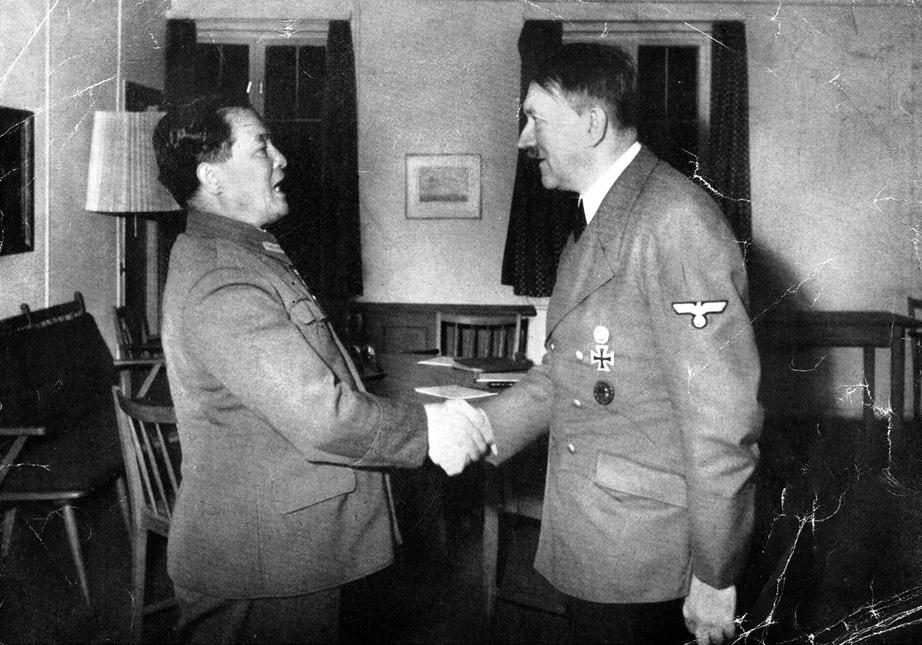
Operational plans were devised by the Wehrmacht high command in September, finalized, and presented to Hitler on October 9. Jodl outlined them for senior western commanders on November 3.
Hitler signed an order on November 10 to prepare for the offensive, and, in a miracle of railroading, the Reichsbahn delivered 200,000 men, 600 tanks, and 2,000 field guns to wooded areas between the northeastern Luxembourg town of Echternach and the German town of Prum, south of Aachen on the Belgian border.
The German preparations were cloaked under some of the tightest security measures in military history. Only a handful of high-ranking officers were briefed on the operation until the last moment, and each of them took several oaths to guard secrecy. They faced the death penalty if found guilty of any breach. Civilians of questionable heritage were evacuated from the front-line areas, and troops of Alsatian or other doubtful lineage were weeded from forward combat units. Armies and corps changed their headquarters codenames, troop movements into assembly areas were made at night to muffle noise, and motor traffic was prohibited within five kilometers of the Ardennes front. By mid-November, the concentration of units was well underway.
There was considerable activity in the scenic 40-mile-by-20-mile Eifel region separating western Germany and eastern Luxembourg. With each dawn, it seemed to the villagers, batches of fresh-faced young men in German field-gray were appearing in their midst as if by magic. There were soldiers and equipment in sheds and barns, shell cases were stacked in gardens, and Tiger and Panther tanks, personnel carriers, flak guns, and horse-drawn wagons were hidden everywhere. Down on the River Prum, infantry companies practiced crossings in rubber boats. By the end of the month, the whole area between the Siegfried Line and the Rhine and Moselle rivers was crammed with German troops.
The launching of the offensive was set for December 12, 1944, but it was moved to the 16th because the desired period of bad weather was not predicted. On December 11-12, army, corps, and division commanders assembled in a large underground room. The top-ranking officers expected to be briefed on the overall picture of the offensive, but Hitler lectured them for more than an hour on Frederick the Great, the history of Germany, and National Socialism. He rambled, ranted, and harangued, and left his listeners with the sense of a final, desperate, Wagnerian effort. None believed that the offensive could succeed, but all were determined to carry out their orders to the best of their ability.
That mid-December, few Allied commanders seriously feared that the Germans were capable of mounting any major attack. The exceptions were General Patton, commander of the Third Army, and Lt. Gen. William H. Simpson, commander of the U.S. Ninth Army. Patton had said on November 24, “The First Army is making a terrible mistake in leaving the Eighth Corps static, as it is highly probable that the Germans are building up east of them.” Simpson saw an attack on the corps front as “a capability.”
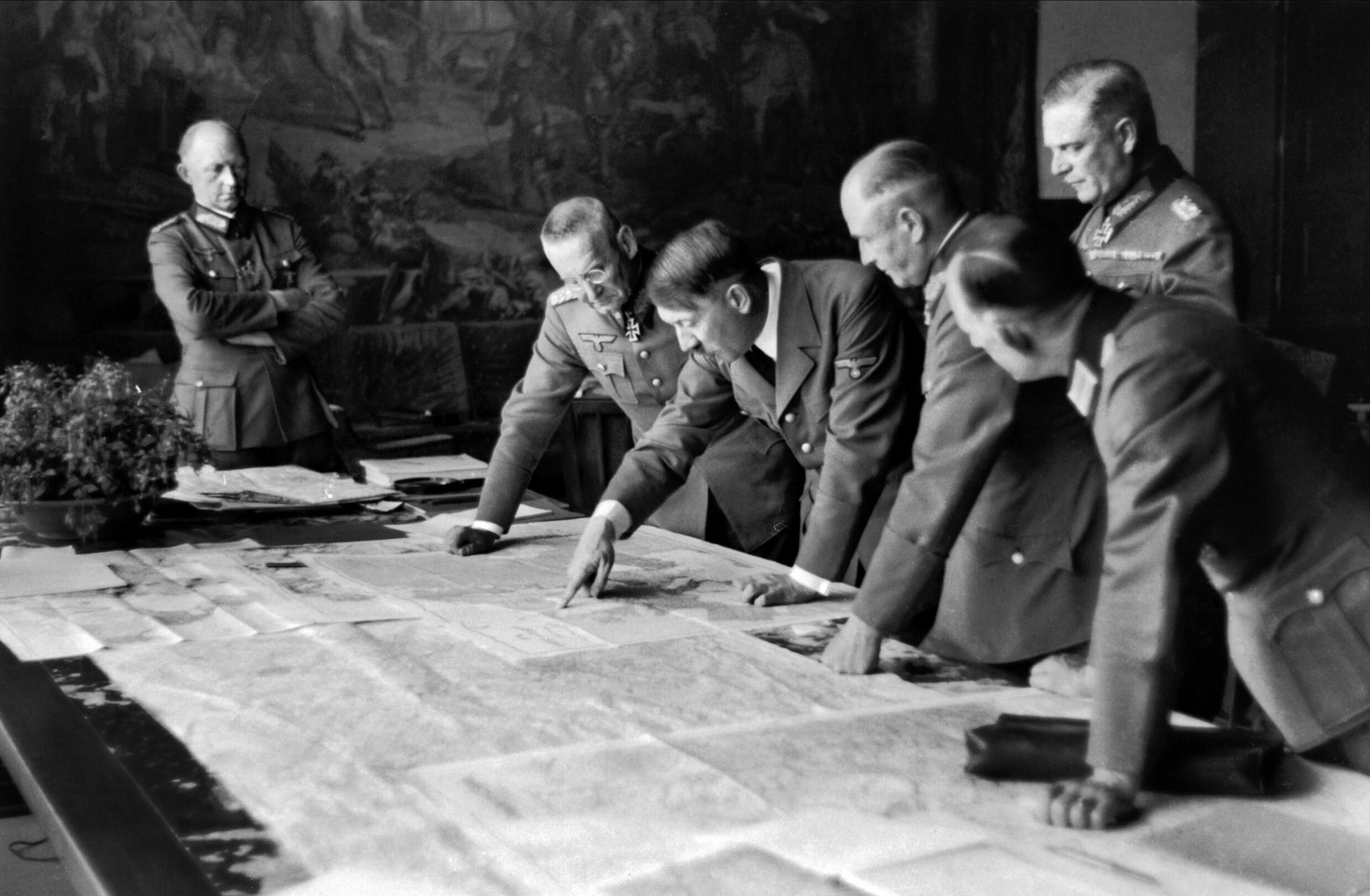
In an estimate of the overall military situation, the usually astute Montgomery confidently told his troops on December 15, “The enemy is at present fighting a defensive campaign on all fronts; his situation is such that he cannot stage major offensive operations.” General Bradley voiced the same opinion, and the optimism was shared by most Allied intelligence experts.
Late in November, Brigadier General Edwin L. Sibert, Bradley’s short, stolid intelligence chief, had called Bradley’s attention to the possibility of an attack in the Ardennes. On December 12, Sibert told Bradley, “The breaking point may develop suddenly and without warning.” Then later he said, “However, I want to emphasize that I only noted the German capability of an attack through the lightly-held Ardennes, and at no time did I specifically state that this capability would be—to use our own peculiar intelligence language—‘implemented.’” Sibert and other intelligence officers later had doubts about the enemy’s perceived weakness but hesitated to voice forceful warnings for fear of being labeled defeatists.
The great German buildup just a few miles east of the Allied lines was a master stroke of secrecy and deception, yet there were continued rumors of an offensive designed to recapture Antwerp. Information reached Allied intelligence that something special was afoot, and a captured document revealed that Hitler himself had ordered “the formation of a special unit for employment on reconnaissance and special tasks on the Western Front. The personnel, it said, would be volunteers “fully trained in single combat” and should have “knowledge of the English language and also the American dialect.” Commenting on the document, the U.S. First Army intelligence section said that “it obviously presages special operations for sabotage, attacks on command posts and other vital installations by infiltrated and parachuted specialists.”
By December 10, American intelligence was aware that five German divisions had left Holland for destinations unknown; that the German 15th Army headquarters had been moved from Holland to the Roer sector, where it was reported to have relieved the Fifth Panzer Army; that there were three refitted panzer divisions between Coblenz and the Luxembourg border, and that several new grenadier divisions had arrived in the Eifel, the German end of the Ardennes.
Further, American cryptologists had broken the Japanese diplomatic code and learned that Hitler had informed Tokyo’s ambassador to Berlin, Baron Hiroshi Oshima, that he was organizing a new army and planning a “large-scale offensive in the West.” Detailed secret reports were circulated to fewer than 20 Allied government and military leaders, but by the time that December rolled around, Eisenhower and his aides had apparently forgotten or discounted them. The Allied intelligence setup was hampered by clashing personalities and a lack of coordinated staff work on the part of Hodges’ U.S. First Army and Bradley’s 12th Army Group.
Meanwhile, as the Allied high command turned a blind eye, intelligence reports continued to hint at an alarming German buildup. Tank formations and newly-formed infantry divisions were spotted moving toward the Ardennes, two “blitz” panzer divisions arrived in the “quiet” sector, and bridging equipment was observed being hauled to the River Our, which covered the southern half of the American front. Allied intelligence was aware of the existence of the new Sixth Panzer Army but did not know of its whereabouts. A German soldier captured on December 4 revealed that a big attack was being readied in the area, and his account was confirmed by other prisoners. All said that the attack was scheduled the week before Christmas.
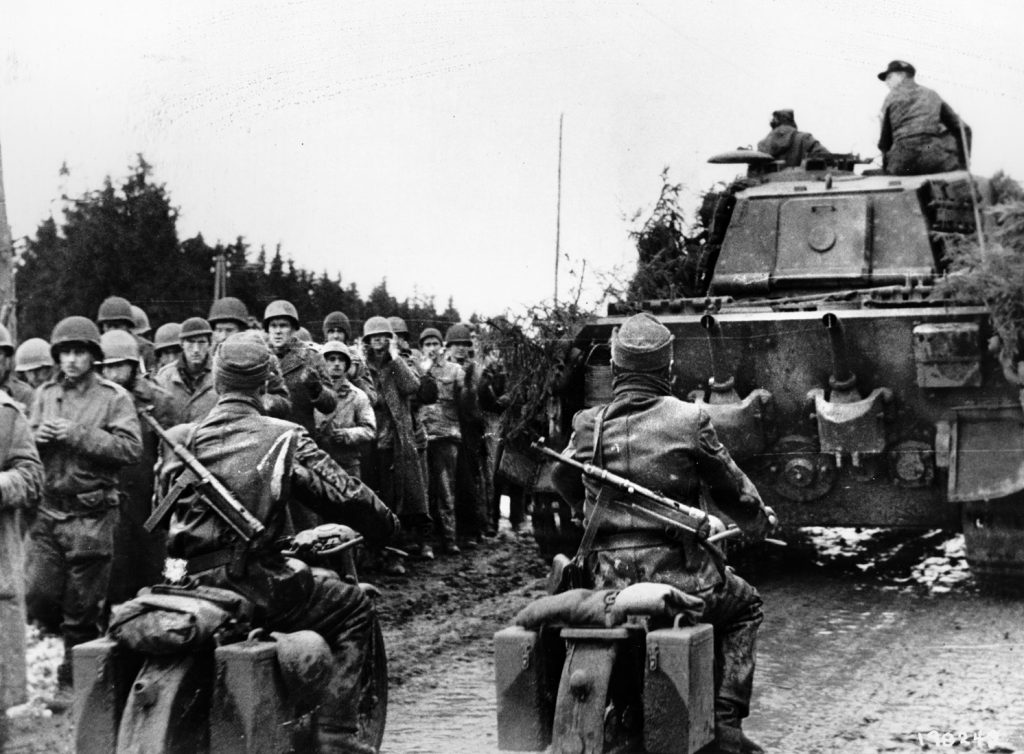
Photo reconnaissance missions by U.S. and Royal Air Force fighters reported considerable enemy activity behind General Middleton’s corps front, including gun emplacements, troop concentrations, road and rail movements, and increased numbers of aircraft. Trucks bearing Allied white stars were also spotted by the reconnaissance pilots. Around December 11, a teletype message from the headquarters of the U.S. Ninth Air Force to the Ninth Tactical Air Force and lower units warned that the Luftwaffe had built up enough strength opposite the U.S. First Army front to make penetrations of about 60 miles above the Allied lines and that the penetrations would probably be attempted during the next two weeks.
While the Germans marshaled their forces in front of the unsuspecting Eighth Corps front, G.I.s and their officers caroused at Friday night parties in garrison towns and grew lax about sending out patrols. But not all of the men on the line felt as secure as their rear headquarters staffs, and some were distinctly uneasy about the ominous quiet a few miles away where the enemy was known to be.
One such was Captain Frederick Feiker, whose K Company, 110th Infantry Regiment, 28th Infantry Division was facing “Skyline Drive,” the main road connecting St.-Vith and Luxembourg. He sent out patrols by day because he had a gnawing feeling that something was not quite right. The patrols were withdrawn when darkness fell. All was too quiet, and something was going on, Feiker sensed. But what? On the VIII Corps front there had been some mysterious disappearances of lone Americans, and a jeep carrying three Army doctors had been ambushed. Their bodies were found, but their uniforms and the jeep were gone. Meanwhile, shivering and apprehensive, Captain Feiker and his comrades strung out along the line peered through the dark woods and listened. They would not have long to wait.
The night of Friday, December 15, 1944, was dark, frosty, and quiet, and a thick mist hung over the rugged, snow-carpeted Ardennes Forest as German troops moved up to their assault positions on an 80-mile front between Monschau, south of Aachen, and Echternach, northwest of the German city of Trier. Three armies comprising 250,000 men, tanks, halftracks, flak guns, armored cars, and support vehicles had been moved secretly to the line of departure.
By midnight, the black-clad panzer crews and grenadiers were at their assigned assault posts. Shivering but enthusiastic, they stood silently as officers read a message from Field Marshal Rundstedt. “We gamble everything,” it said. “You carry with you the holy obligation to give all to achieve superhuman objectives for our fatherland and our Fuehrer!”
At 5:30 am, the next morning, Saturday, December 16, 1944, “all hell broke loose” along the 80-mile Ghost Front as German 88mm flak guns and artillery pieces blasted, mortars thumped, and rockets hissed from their launching platforms. The ground shook, and hundreds of panzers clanked forward. Hitler’s great counteroffensive, his final gamble, was underway.
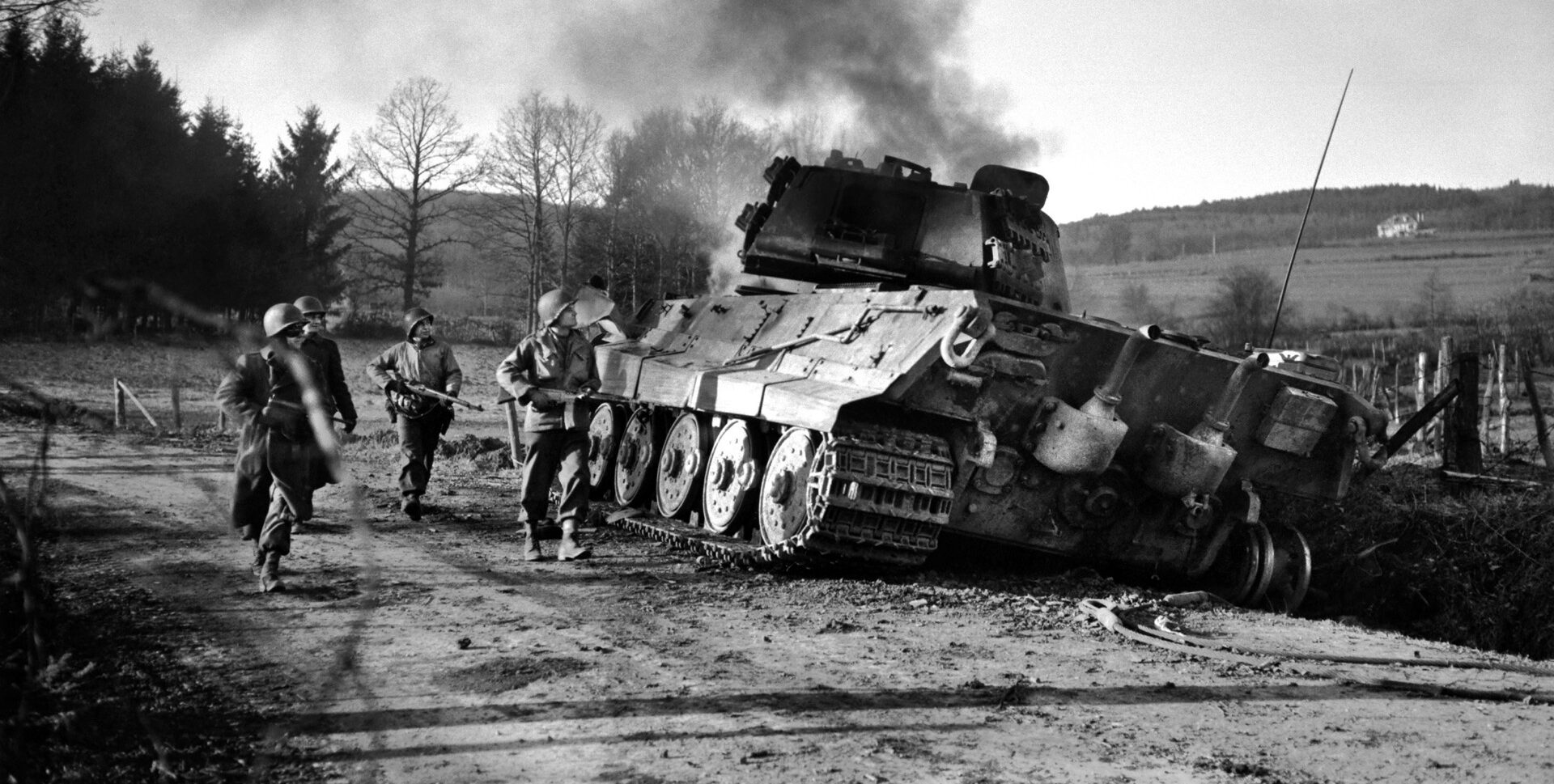
For five days, Hitler’s luck with the weather held. Catching the Americans by surprise, his armies scored several breakthroughs and carved a 60-mile bulge in the Allied lines. But the counter-offensive slowed down as American resistance stiffened and a critical fuel shortage hobbled the German columns. Several of Patton’s divisions moved up from the south, British armored units hastened to defend the River Meuse and shield Antwerp, and the enemy lost the race to seize the key Belgian road center of Bastogne.
The weather cleared two days before Christmas, enabling British and American planes to lend support, and Hitler’s big gamble fizzled. With massive attacks on the salient, the Allies assumed the offensive on January 3, 1945. By the end of that month, the bulge was wiped out. The campaign delayed the Allied advance into Germany by six weeks.
Besides the strengths and weaknesses of the U.S. Army, the Battle of the Bulge portrayed in bold relief serious flaws in the Allied intelligence network and a near-fatal disregard of the essential military dictum, “Know your enemy, or die.” General Eisenhower stated, “A shocking deficiency that impeded all constructive planning existed in the field of intelligence. The stepchild position of G-2 in our General Staff system was emphasized in many ways.”
Historian Robert E. Merriam, author of Dark December, wrote, “We were completely, utterly fooled,” while Ike’s British intelligence chief, Brigadier Kenneth Strong, said simply, “If Intelligence was not to blame, who was?”
Author Michael D. Hull passed away some months ago. He was a frequent contributor to WWII History and wrote on a variety of topics from his home in Enfield, Connecticut.
